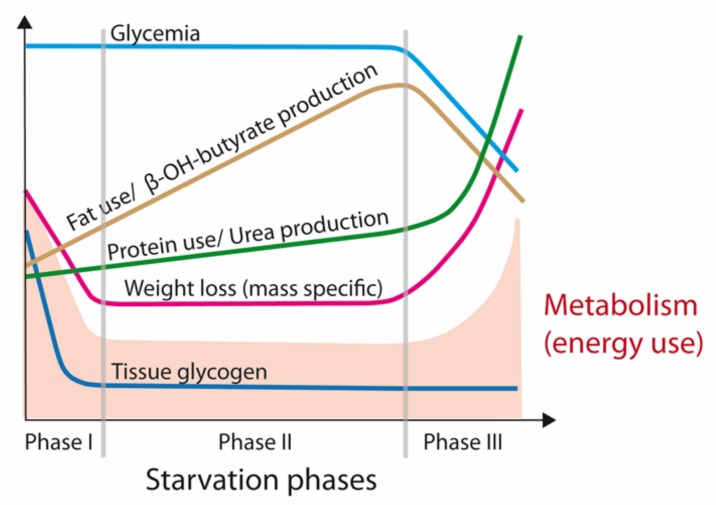Figure 1.
Phases of starvation. In the first phase of starvation, glycogen stores are utilized rapidly and the body reacts by reducing metabolic needs and resting energy expenditure (REE). In Phase II, gluconeogenesis is the main energy provider, initially from protein carbon chains, then increasingly from fatty tissue. In the third phase, fat stores are depleted. Resting energy metabolism and protein use greatly increase, leading to end of life by exhaustion (adapted from [15]).

